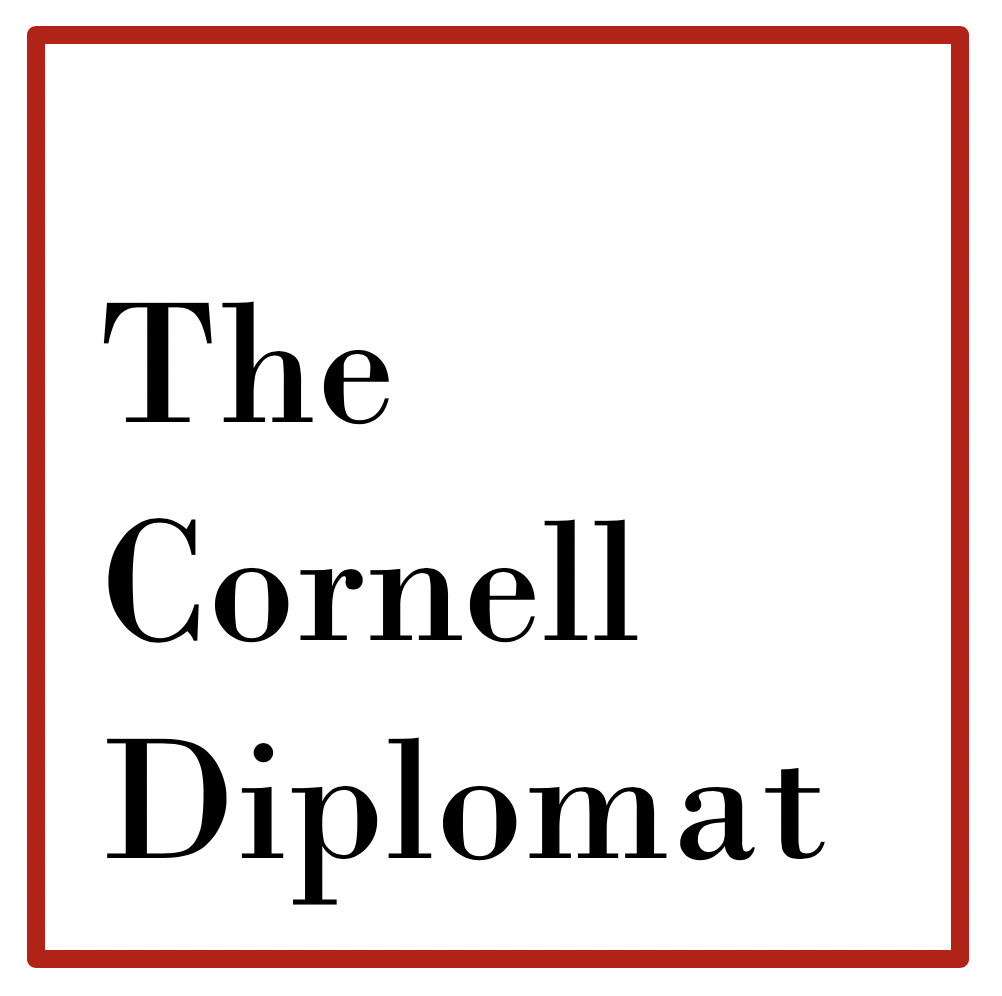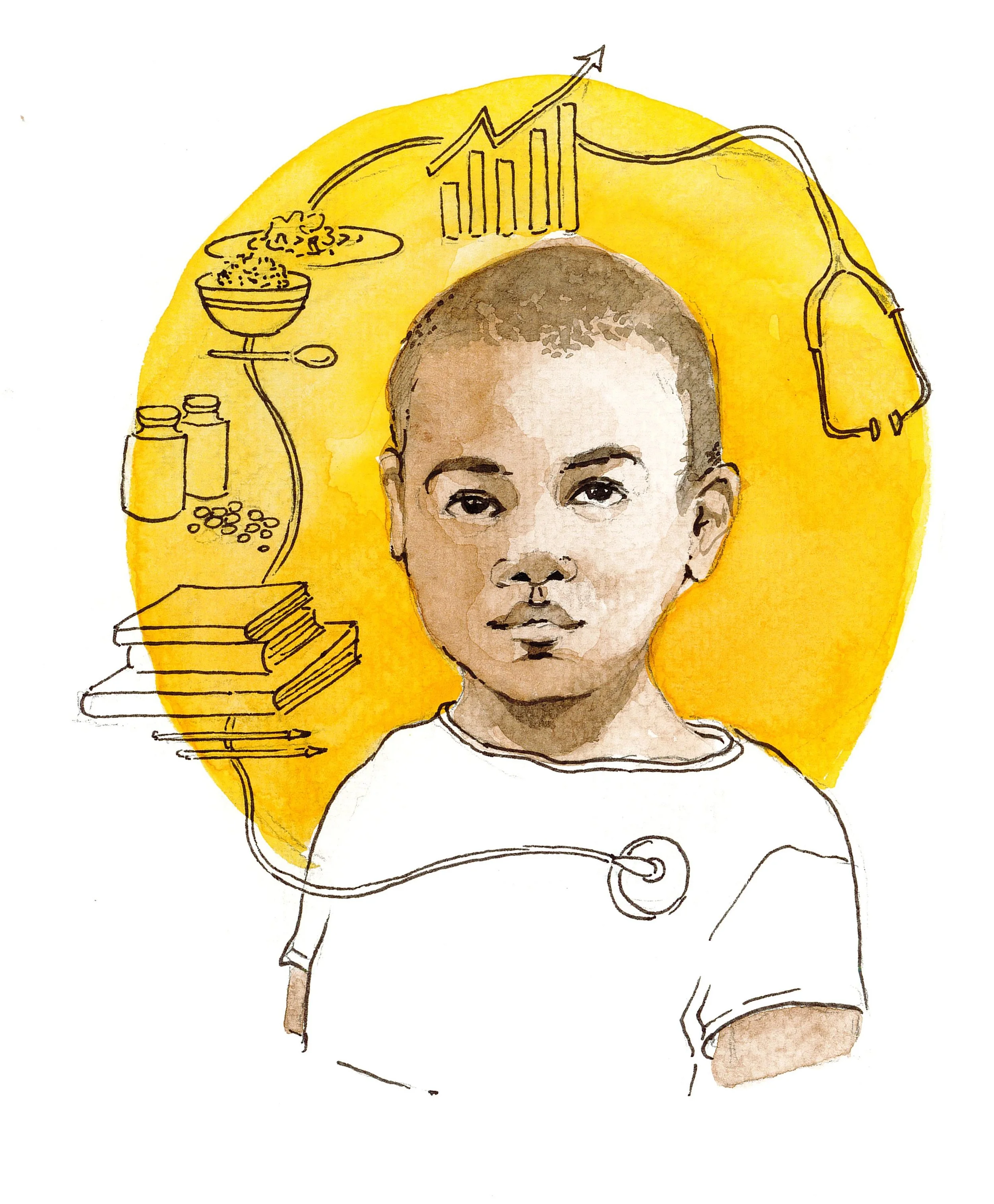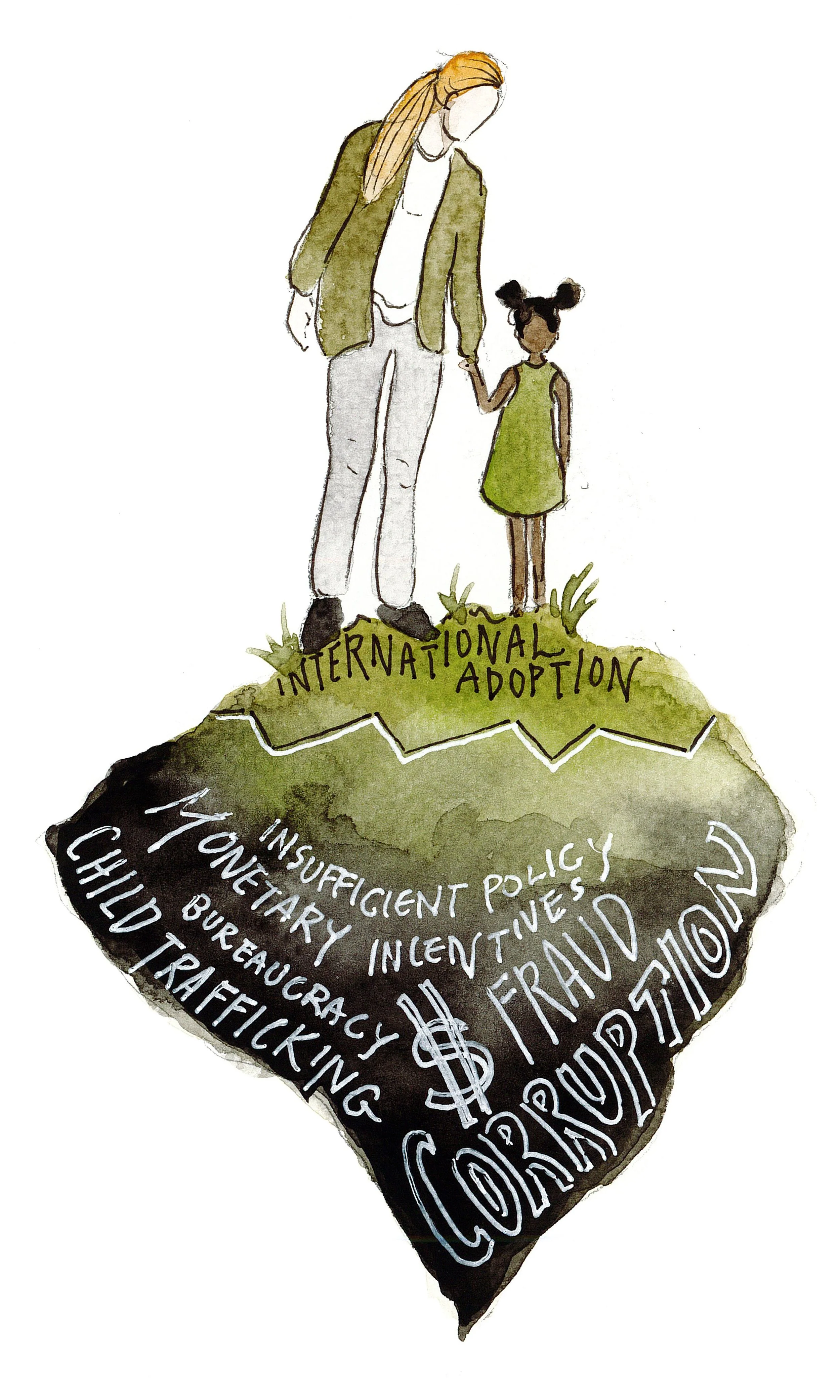Feeding Two Birds With One Scone: The Economic Utility of Pediatric Health Investment
Feeding Two Birds With One Scone:
The Economic Utility of Pediatric Health Investment
By Max Link
As COVID-19 vaccination rates begin to rise and the global economy gets back on its feet, nations gradually return to “normal” while retaining confidence in existing institutions. However, as the world emerges from that crisis, nations have the opportunity to capitalize on the upturning of conventional practices in all areas of governance to build the foundations necessary for a viable future. Public health and economic development are two policy areas that can be addressed simultaneously. Governments have always measured health programs for their sector-specific effects, while the intersectional connection between health programs and economic growth remain relatively unexplored. Economic gains from health initiatives can be maximized through childhood interventions because health issues occurring in childhood affect the entirety of one’s productive years.[i] The benefit of investing in pediatric well-being becomes even more clear when compared to the efficacy of other development initiatives. Interdisciplinary obstacles require interdisciplinary solutions, and pediatric health intervention is one of the best ways that policymakers can optimize wellbeing.
The Opportunity
The utility of investing in pediatric health as a method of increasing human capital is more important now than ever before. According to the World Bank, human capital “consists of the knowledge, skills, and health that people invest in and accumulate throughout their lives, enabling them to realize their potential as productive members of society.” In today’s world, nations cannot experience sustainable development or be competitive in the global economy without making significant investments in human capital.[ii] Gone are the days when a sizable unskilled workforce could catapult a country up the income ladder. Thus, lacking pediatric growth is most costly for lower-income multinational regions such as South Asia, Latin America, and Sub-Saharan Africa. Chief among individual nations standing to benefit are India, Mexico, and China, who could see a $38B, $18.5B, and $13.3B increase in wages per year, respectively.[iii]These countries, just like many others, miss out on billions of dollars per year due to their citizens’ sub-optimal health outcomes. Future wages are important indicators of development because higher wages are a result of higher productivity, which is possible through greater human capital. Constructing and implementing cost-effective strategies to increase human capital is of increasing priority for low and middle income countries, and pediatric health programs fulfill such a niche.
Deadweight Loss of Worms
Pediatric health is an important determinant in educational achievement, a pillar of human capital. A case study that originally directed scholars toward studying this relationship between health and development examined the impact of a deworming program in Kenya run by the Dutch nonprofit, Investing in Children and their Societies–Africa. Worms, otherwise known as helminth infections, are “of major importance in developing countries” and can cause, among many other symptoms, “retarded growth and economic development.” They are considered Neglected Tropical Diseases because they disproportionately affect impoverished people in tropical areas.[iv] The deworming program, called the Primary School Deworming Project (PSDP), oversaw 30,000 students in one of the most heavily disease-burdened areas in Kenya. Edward Miguel of UC Berkeley and Michael Kremer of Harvard undertook a randomized evaluation of PSDP in 2001. Their findings demonstrated that the PSDP resulted in significant gains in attendance, contributing to a 25% fall in absenteeism rates. In this way, community-scale deworming for children improved the state of education.
After establishing the link between deworming and attendance, Kremer and Miguel demonstrated that worms also hinder productivity. Many people with severe worm infections were unable to work at all or had impaired capabilities which prevented them from reaching maximum productivity and acquiring higher wages. The effect of worms on productivity was greatest if the worms infected the subject in childhood. Untreated worm infections in children can lead to anemia and digestive failure, damaging prospects for higher wages. Overall, their research concluded that “deworming [programs] increase the net present value of wages by more than $20 per child at a cost of only $0.49”—an incredible return on investment. In fact, the overall cost-benefit ratio generated by PSDP was calculated by the researchers to be 1:10, meaning that this pediatric health program was worth ten times the resources invested in it.[v] As this study demonstrated, deworming as a public health initiative resulted in exceptional economic gains through labor capabilities and educational achievement.
A long-term follow up on the Kenya study, led by MIT economist and Nobel laureate Esther Duflo, corroborated the evidence for pediatric health’s role in development economics. Their ten and twenty-year study tracked human capital development in former beneficiaries of PSDP. It found that girls, in particular, saw an achievement benefit, with the pass rate for the secondary school examination being raised by 25%. An additional two to three years of deworming led to an increase in the average number of meals per day and a 20% increase in wages. The year-to-year societal return on investment was quantified at 37%. PSDP resulted in an average extra 11.2 years in schooling for individuals, by far the most cost-effective strategy for school attendance. A comparative analysis with other types of intervention also found nutritional supplements to take second place.[vi] Pediatric health interventions generated decades of benefits through human capital improvements.
Externalities of Malnutrition
Pediatric health economics encompasses not only the burden of tropical disease, but also the other primary health issue in developing countries: malnutrition. A key study that supports the existence of a causal link between pediatric health investment and economic returns pertains to an iron supplementation program in Zanzibar. According to the WHO’s Malnutrition Fact Sheet, malnutrition in iron supplementation is a major factor in 45% of deaths of children under 5, mostly occurring in low and middle-income countries.[vii] In 2001, Rebecca Stoltzfus, Jane Kvalsvig, Hababu Chwaya, Antonio Montresor, Marco Albonico, and James Tielsch published their results of a 1996 study conducted in Zanzibar. It involved 684 kids from 451 households receiving either an iron supplement or placebo. These kids were then subject to various cognitive development exams between 1996 and 1997.[viii]
The eight researchers found that iron supplementation directly improved achievement on the motor and language skill tests of preschool-aged children. Notably, language development improved by 0.8 points on a twenty point scale. Direct iron supplementation turned out to be of relative strength as well, outperforming antiparasitic drug intervention programs.[ix] While the health issue addressed by this program differed from that targeted by the Kenyan infectious disease research, it achieved similar economic results. The iron supplementation initiative improved the wellbeing of children, who then performed better on cognitive and motor development tests. This research demonstrated that nutritional programs are effective at raising the educational performance of kids, which improves educational achievement and increases human capital.
Conclusion
Case studies with similar results are not anomalies in the literature on economic development and health. In 2005, the WHO compiled a meta-analysis of dozens of case studies on the topic to arrive at a definitive conclusion: investing in pediatric health results in significant economic gains.[x] This analysis argues that adverse health situations at a young age damage human capital attainment and increase the cost to society, hindering economic growth. In turn, poverty results in low human capital development, which leads to low productivity and impairs national economic outcomes. It also notes that children of poor families are less likely to have access to quality health care, reducing their economic prospects and keeping them trapped within a low economic status. In this way, poor health transmits intergenerational poverty, trapping scores of people in suboptimal outcomes today and tomorrow. The WHO recommends pediatric health programs as a highly effective tool to combat this large-scale poverty.
These case studies demonstrate a clear link between health programs, human capital, and labor productivity. The high return on investments suggests that countries in situations comparable to those studied have a prime opportunity to address health and economics simultaneously. On its own, the results of these studies point to an economic imperative, not just a moral one. Comparatively, pediatric investment is elevated to a simple yet potent pillar of development economics. Children’s health, over any other method, is the clear winner in cost-effectiveness for human capital gains. It is not just a tool for policymakers, it is the tool for boosting wages with the least potential for wasting resources.
Addressing Neglected Tropical Diseases and malnutrition would increase human capital for the vast number of children that will develop into a workforce, and at a relatively low cost for governments. The clear link between health, human capital, and economic outcomes represents an opportunity for governments with emerging economies to tackle multiple crises simultaneously. It is clear that dollars in pediatric public health result in remarkably large gains in national income. As nations emerge from the current pandemic, policymakers would do well to study pediatric health as an avenue for structural positive change.
Illustration by Esther Wang
[i] The Medical Dictionary, “Child,” https://medical-dictionary.thefreedictionary.com/child
[ii] “World Development Report 2019: The Changing Nature of Work,” World Bank Group, 2019, https://documents1.worldbank.org/curated/en/816281518818814423/pdf/2019-WDR-Report.pdf
[iii] “Cost of poor child growth in developing world: $177B in lost wages for children born each year,” Harvard T.H. Chan School of Public Health, https://www.hsph.harvard.edu/news/press-releases/cost-of-poor-child-growth-in-developing-world-177b-in-lost-wages-for-children-born-each-year/
[iv] “Diseases: Neglected Tropical Diseases,” Centers for Disease Control and Prevention, October 21, 2020, https://www.cdc.gov/globalhealth/ntd/diseases/index.html
[v] “Long-run and Intergenerational Impacts of Child Health Gains from Deworming in Kenya,” MIT Jameel Poverty Action Lab, 2021, https://www.google.com/url?q=https://www.povertyactionlab.org/case-study/deworming-increase-school-attendance&sa=D&source=docs&ust=1637361505650000&usg=AOvVaw0kyMRvD3IlC3NdrvJYZGBJ
[vi] “Long-run and Intergenerational Impacts of Child Health Gains from Deworming in Kenya,” MIT Jameel Poverty Action Lab, 2021, https://www.google.com/url?q=https://www.povertyactionlab.org/case-study/deworming-increase-school-attendance&sa=D&source=docs&ust=1637361505650000&usg=AOvVaw0kyMRvD3IlC3NdrvJYZGBJ
[vii] Paolo Belli et al, “Investing in children’s health: what are the economic benefits?” World Health Organization, 2005, https://www.who.int/bulletin/volumes/83/10/777.pdf?mod=article_inline
[viii] Jane Kvalsvig et al, “Effects of iron supplementation and anthelmintic treatment on motor and language development of preschool children in Zanzibar: double blind, placebo controlled study,” The BMJ, October 2001, https://www.bmj.com/content/372/bmj.n19
[ix] Jane Kvalsvig et al, “Effects of iron supplementation and anthelmintic treatment on motor and language development of preschool children in Zanzibar: double blind, placebo controlled study,” The BMJ, October 2001, https://www.bmj.com/content/372/bmj.n19
[x] Paolo Belli et al, “Investing in children’s health: what are the economic benefits?” World Health Organization, 2005, https://www.who.int/bulletin/volumes/83/10/777.pdf?mod=article_inline



